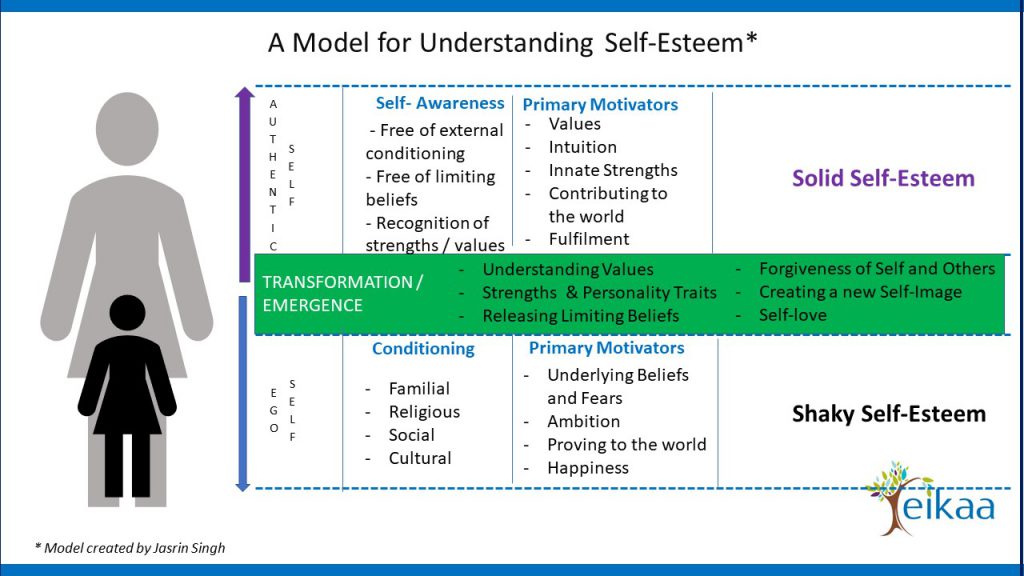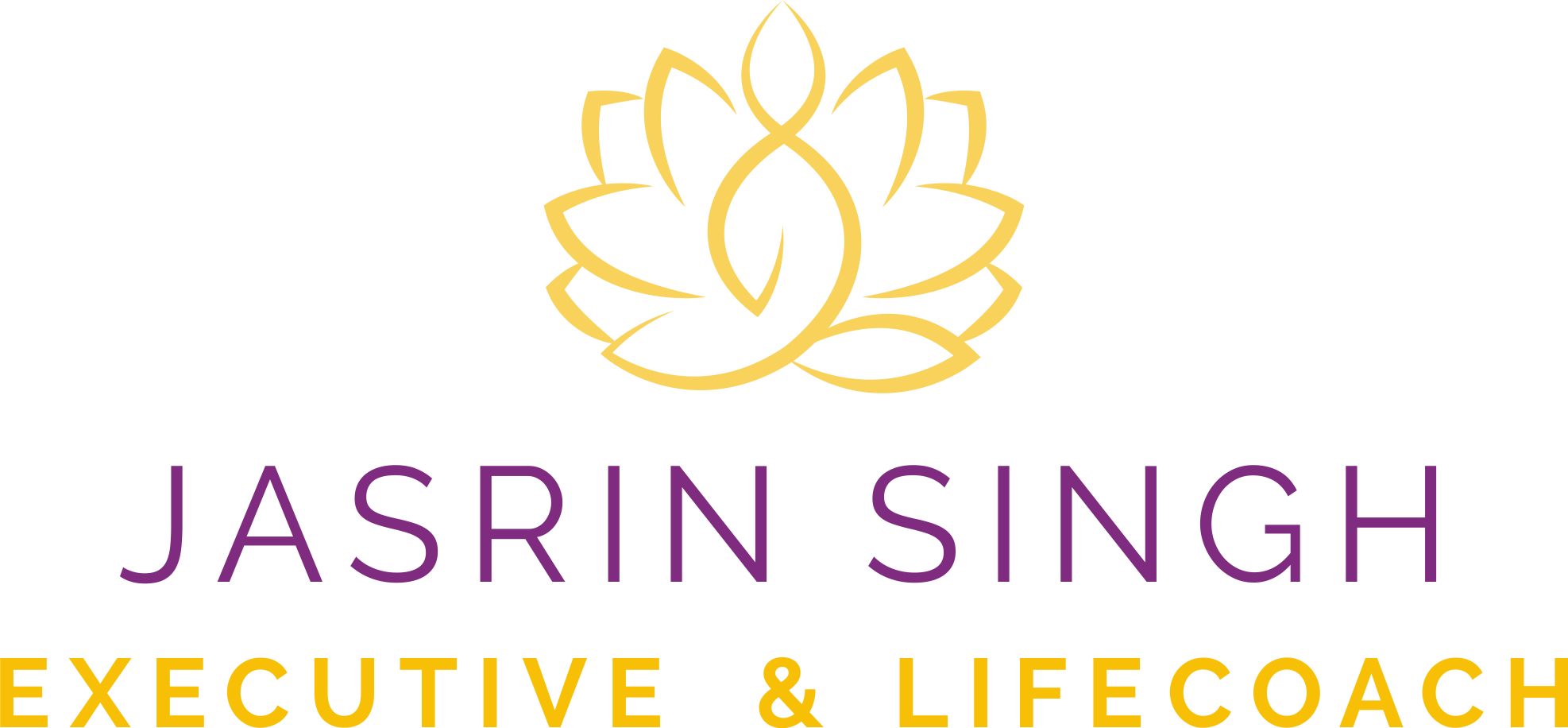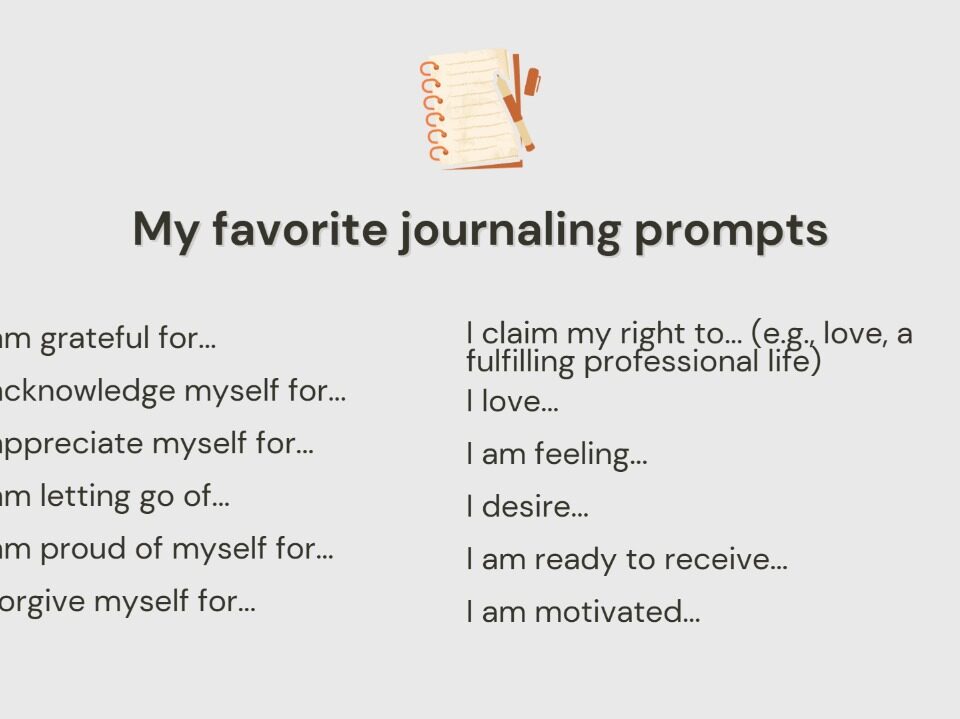
The development of Authentic Self=Esteem
November 19, 2018
Mental Health, Spirituality and our Work place
April 2, 2019A Power Tool by Jasrin Singh, Executive and Life Coach
Introduction:
What is it that we need to surrender or let go of to become the greatest versions of ourselves?
The answer is – Our Fears.
“Fears are educated into us, and can, if we wish, be educated out.”
- Karl Augustus Menninger, a famous American Psychiatrist
Much of what is educated into our sub-conscious or unconscious, without us having a choice occurs in our childhood. These sub-conscious paradigms, or the underlying belief systems resulting from social, familial, religious and/ or cultural conditioning and have been found to be the primary cause of Fear in humans.
The conditioning creates a false ego-self, which causes people to often sabotage their true potential, and way of being. People operating from fear-based paradigms, our unable align themselves to their authentic and unique self the self that brings ultimate meaning and fulfilment in ones life.
FEAR is literally speaking – False Evidence Appearing Real. Fear is an irrational feeling or thought. You cannot reason with fear, but with awareness and attention, we can transform and transmute it. One of the most powerful ways to transmute are fears is by the technique we will refer to as Surrender.
Surrender is the journey from the outer turmoil to inner peace. Sri Chinmoy
To surrender, typically means to relinquish, something to someone – be it in war, or a game. But in life, surrender can have a deeply impactful and moving effect on us. The power of surrender in personal growth and Coaching, is relatively unexplored, because of the religious connotations that accompany surrender of the personal self.
In the Coaching context, Surrender is the letting go of all that no longer serves our highest expression of self. This letting go process, allows us to release negative, limiting feelings and emotions, so well-being and creativity can manifest, without interference of fears.
Letting go is like the sudden cessation of an inner pressure or the dropping of a weight. It is accompanied by a sudden feeling of relief and lightness, with increased happiness and freedom. It is an actual mechanism of the mind, and everyone has experienced it on occasion.
Dr. David Hawkins, Letting Go The pathway to Surrender.
Self-Application:
Where do Fears come from?
Fear is something that exists in all/ most human beings. Fear is a PROJECTION of the human Ego, or what Carl Jung referred to as the Shadow aspect of the human personality. Being a Projection, fear is mostly imaginary and a reflection of some long-term wrongful thinking in our psyche, induced and influenced by society, families, religions, cultures. Alternatively, traumatic experiences and our personal interpretations of them, may also lead us to have deep seated fears, traumas and phobias.
Most Fear has its basis on what can be called Core Human wounds, present in the Collective Ego:
- Fear of not being good enough (beautiful, smart, intelligent, clever etc)
- Fear of failure
- Fear of judgement
- Fear of abandonment
- Fear of being alone
- Fear of lack / loss/ not having enough
And they usually present themselves in day to day life as below:
- Fear that certain conditions might change – Fear that we may lose a job, a relationship or get a disease. This is projection of our insecurities into the future, causing unnecessary strain on us. We worry about what we would do without the job, the partner etc or if we got a disease. (Fear of Loss / not having enough)
- Fear enters us when we need to make a decision Making decisions involves taking responsibility as well as dealing with the consequences of our actions, which may or may not be favorable. This can induce huge amounts of stress and cause people to be completely risk-averse. (Fear of Failure, Fear of judgement)
- Fear is also associated with self- doubt, guilt, anger, jealousy, hatred, which are all disguised forms of fear, where one projects their insecurities either on self, or outwards. (Fear of Judgement, Fear of not being good enough)
- Extreme Fear: When we are suffering from extreme Fear we essentially are hijacked by our Brains flight or fight syndrome, and our response to the stimulus is greater because it poses an emotional threat, based on past experience or trauma. This situation causes our bodies to tighten, reduce breath flow and increase anxiety. In this mode it is often difficult to find a way out without the help of an outside party. This state of fear is often referred to as the Amygdala Hijack (Ref 2), coined by Daniel Goldman, in his book Emotional Intelligence, why it can matter more than IQ.
FEAR can be the most devastating of all feelings, because it has the capacity to paralyze us, making us incapable of moving or changing. It results in overwhelm, a refusal to make decisions, and an unwillingness to change. As Coaches, we have a responsibility to deal with our own fears as well help our clients deal with theirs.
The Power of Surrender
Most fear has no rational basis, therefore, we cannot outwit Fear by justification, reason, logic or argument. To address fears, we need to go to a deeper level that is the level of Consciousness. For this purpose, we use a process called – Letting Go based on the teachings and books of Dr. David Hawkins, M.D. Phd. This process provides a mechanism by which to unlock our innate capacities for happiness, success, health, well-being and intuition.
Letting go of our fears, requires that we first cleanse ourselves of any repressed and suppressed emotions. These repressed and supressed emotions usually manifest as resistance in our mind, at thought level (Example I cant, I dont deserve this, I am not that smart, Why am I so unlucky, its too hard, I try but things dont work out, etc) and prevent us from living our best lives.
It may be hard for us to surrender, without having some sense of what it is we are surrendering to. With faith in a higher power the process of surrendering our fears becomes much easier and non-intellectual. Surrender begs us to go beyond mind, to the level of consciousness, and look for solutions and answers in the unknown, or unexperienced.
In a Coaching context, where there is no clear connection of the client to a higher power, we use the words letting go but the process of application remains the same.
The only requirement from the client is Volition and Intention.
As Coaches we are familiar with the Power of Intention but we sideline powerful tools such as surrender and Faith, because of religious connotations. Here I am hoping to bring this as an option and a modality to be used in Coaching, for the acceleration and evolution of our clients well-being. We dont need to be religious to have faith in a higher power, but an acceptance that there is a power greater than the individual self, which is benign, all knowing, and loving may help us and our clients, more than we can imagine or know.
REFLECTION:
- What does the word Surrender mean to you? Have you ever surrendered something that was beyond your control? What did that process do for you?
- What does the word Faith mean to you?
- What are some of your greatest fears?
- When was the last time you faced a major fear, and what did you to overcome it?
Coaching Application:
Acknowledging fear, accepting it and letting it go, may allow us to bypass the psychological digging and source searching of underlying beliefs, that we sometimes undertake in Coaching.
The technique of Letting go is like a fast track to change and transformation. While faith in a higher power, and therefore something to surrender to, is helpful it is not necessary for the efficacy of this process. If our clients do have faith in a higher power, then viewing the greater power as a benevolent and loving friend, rather than an enemy, will provide for a solid foundation they need to connect with their Higher Self and surrender what they need do.
To be excellent Coaches, we need to be clean vessels for our clients, have faith and confidence in our abilities as a Coach, while fully surrendering to the moment. As Coaches, we also need to be experts at Letting go Of judgements, of expectations, of our own fears.
Case Study:
A client, came to a session in a complete panic. She was clearly in distress, anxious and almost unable to breathe properly.
Client shared that her spouse was potentially looking at the loss of a job, that he had dedicated 27 years of his life to. Even though my client is a successful woman, her financial security and expenses of childrens education were all tied to his job. Fear and anxiety had completely taken over and triggered the Amygdala hijack. (Ref 1)
- She wanted to be there for her husband but did not much enjoy the role of being the strong one. She was doing her best to keep faith but was not really managing it too well. Despite, her reactions, client had the awareness that she was being overtaken by the emotions but was quite unable to get herself out of it.
- On further exploration, it was clear, that there was an underlying belief, that all financial security lay in this particular job of the spouse. This belief had created a great fear as she imagined having to pull her kids out of college and moving back to home country.
- As we explored what was triggering this extreme response, she realized that as a child, she had suffered a similar situation, when her father had to sell all they had, and she had worried and stressed so much about how they would survive. Because the significant emotions around that situation had not been expressed and released, this incident brought back all the trauma of that situation and sent my client into an Amygdala hijack situation.
In the Coaching Conversation, my client and I:
- Talked through the matter and reminded her of how she had overcome some very challenging situations in the past. (Acknowledgement of Self)
- Recognized that there were many more options, than what her immediate fear-based response was telling her (Explored multiple scenarios instead of doomsday)
- Acknowledged and accepted her fears, as well as anger towards company and people surrounding her spouse.
- Created a safe space using a Guided Visualization, to surrender/ let go all the thoughts and emotions that were not serving her.
As a result:
- Client felt greatly relieved, recognized multiple options even if her husband did loose her job, and most importantly felt calm and peaceful.
- As an action, she decided to be more supportive of her husband, and be there for him, as he had always been there for her.
Takeaway From Fear to Acceptance to Surrender to Faith.
Using Surrender with your Clients:
- Create a safe space of trust and intimacy with client
- Explore and help client identify fears
- Explore underlying beliefs surrounding the fears (It is easier to surrender a feeling around a belief, rather than the belief itself)
- Invite client to share all the negative emotions/ feelings surrounding the fear anger, jealousy, shame, guilt, sadness, anxiety, grief, despair etc.
- Invite client to release self-judgement about negative feelings
- Help client create space between client and emotions Acknowledge, observe and accept fully the negative feeling/ emotion.
- Invite client to use their will and intention to let it go or surrender the emotions and fears.
- Whenever a negative thought or feeling around the subject comes up, simply invite the client to remind themselves to let it go.
(Ref 1) An Amygdala Hijack is an immediate and overwhelming emotional response out of proportion to the stimulus because it has triggered a more significant emotional threat. The amygdala is the part of our brain that handles emotions. During an Amygdala Hijack, the amygdala “hijacks” or shuts down the neo-cortex, the rational thinking brain.
Note This paper is based upon the collective works of Dr. David Hawkins, MD, Phd, and tools and processes I have used as a Coach, to enable my clients to move forward from potentially debilitating circumstances.
To have a Coaching Conversation with us, please CONTACT US.




